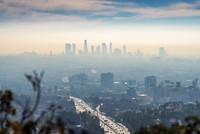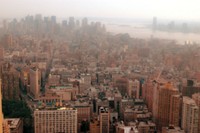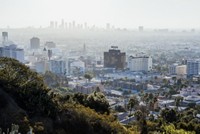Advertisement
Grab your lab coat. Let's get started
Welcome!
Welcome!
Create an account below to get 6 C&EN articles per month, receive newsletters and more - all free.
It seems this is your first time logging in online. Please enter the following information to continue.
As an ACS member you automatically get access to this site. All we need is few more details to create your reading experience.
Not you? Sign in with a different account.
Not you? Sign in with a different account.
ERROR 1
ERROR 1
ERROR 2
ERROR 2
ERROR 2
ERROR 2
ERROR 2
Password and Confirm password must match.
If you have an ACS member number, please enter it here so we can link this account to your membership. (optional)
ERROR 2
ACS values your privacy. By submitting your information, you are gaining access to C&EN and subscribing to our weekly newsletter. We use the information you provide to make your reading experience better, and we will never sell your data to third party members.
Environment
EPA Proposes More Protective Air Pollution Limit For Ground-Level Ozone
Regulation: Industry and congressional Republicans fault plan to ratchet down standard to 65 to 70 parts per billion
by Cheryl Hogue
November 26, 2014
Citing the need to protect public health, the Environmental Protection Agency today proposed tightening the national limit for ground-level ozone, a major component of smog.
Under its Clean Air Act proposal, EPA would strengthen the current federal air quality standard for ozone by setting it somewhere in the range of 65 to 70 parts per billion. The current standard, set in 2008, is 75 ppb. EPA is under a federal court order to finalize a new standard by Oct. 1, 2015.
Industries, including chemical manufacturers, that emit pollutants that form ozone oppose EPA’s plan, predicting it would harm the economy. The incoming Republican-controlled Congress likely will attempt to thwart EPA from completing the new standard.
The American Chemistry Council, an association of chemical manufacturers, says that if implemented, the tighter standard could hurt the U.S. chemical industry’s planned expansions, which are being driven by increasing supplies of natural gas, a major raw material. “Manufacturing growth could slow or stop in states that find themselves unable to meet a lower ozone standard” because of increased costs to comply with air pollution regulations, the group predicts. Many chemical plants emit nitrogen oxides and volatile organic compounds, substances that react in the presence of sunlight to form ozone.
Rep. Edward Whitfield (R-Ky.), who chairs the Energy & Commerce Subcommittee on Energy & Power in the House of Representatives, says the proposed standard “could be nearly impossible to meet, especially for areas of the country still struggling to comply with the current ozone standard.” He says the new Congress, which convenes in January 2015, will “rein in” this and other EPA regulatory efforts.
But EPA says only nine U.S. counties outside of California are likely to fail to meet a 70-ppb standard by 2025, and 59 counties would miss meeting a 65-ppb standard by the same year. Under the Clean Air Act, California, a state that has long struggled with air pollution, would have more years than the rest of the country to implement whatever level EPA ultimately sets.
Environmental and health groups welcomed the plan, but some were concerned that EPA’s formal proposal did not include the 60-ppb level recommended by the agency’s panel of independent science advisers. EPA Administrator Gina McCarthy says she gave this recommendation “strong consideration” and points out that the proposal seeks comments from the public about a possible 60-ppb standard.





Join the conversation
Contact the reporter
Submit a Letter to the Editor for publication
Engage with us on Twitter